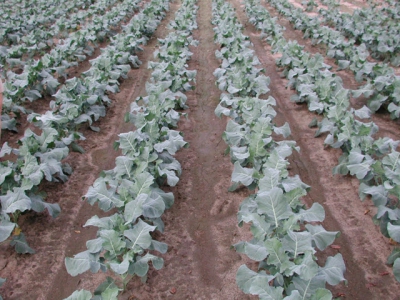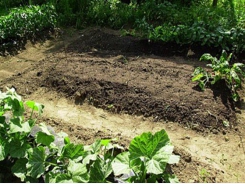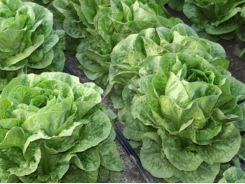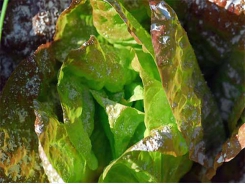Brassica Vegetables And How to Grow Them Successfully

Brassica Vegetables
The word brassica is a group name, the preserve of the botanists in the days when a gardener lumped the members of this family together under the term ‘greens’. Greens perhaps describes the group more accurately as it covers that group of vegetables where the portion consumed is above ground as distinct from roots, where the part below soil level is eaten.
Brassica vegetables all developed from a common wild type, remnants of which are still found round the coasts of the British Isles and many European countries. Over thousands of years, without the aid of man, it has divided itself neatly into such diverse plants as cauliflowers, sprouts, hearted cabbage and many other variations.
Working perhaps from the observed resistance of the wild cabbage of the coastline to severe weather and that the salt spray gave the leaves resistance to frost, gardeners treated their brassicas with salt and recommended the use of a cube of salt per plant in autumn. (The measure was made from a potato with a cubic inch cut out).
What appears to cause the breakdown of the leaves of modern brassicas, is alternate freezing and thawing. I have found that by giving individual plants a teaspoonful of salt, the modern equivalent of a cubic inch, a resistance to freezing is developed; just like topping up the radiator with anti-freeze. Not only does it work but it gives an improved flavour, particularly to sprouts, savoys and winter cabbage.
The brassica vegetables do not need to be coddled in any way. They require space so that air can circulate through the leaves; in fact they will grow in a field more happily than in the garden. They are not fussy about soil, provided that it is well drained, moisture retentive, alkaline (limy) rather than acid and enriched with farmyard manure or compost. The ubiquitous peat is not recommended. A slight exception to this is the cauliflower which can be regarded as the queen of the brassicas and, as befits a lady, should be treated more delicately. Cabbages and Brussels sprouts can be planted in ground that hasn’t even been dug over, but the cauliflower is better transplanted from the seed bed, lifted with a trowel and planted with a good ball of soil.
All brassicas may be sown in prepared drills in early spring; the times depending on the district. In the more favoured districts they may be planted the year before in August or September to stand in their rows during the winter months. Sprouts require a longer season of growth than any other member of this family, so they can be started early in gentle heat by sowing seeds thinly in boxes, frames or under cloches.
The worst form of plant, but the ones which are most likely to be bought, are those which are sown thickly in rows in a nursery bed and just yanked out, tied up in bunches and offered for sale. Far better to raise your own plants as the worst enemy of the brassica tribe, club root, can easily be imported. They are easily raised and the number of seeds in a packet is still generous. So millions more plants than necessary must be raised and wasted every year. By the way, brassica seed will keep approximately four years and, curiously, plants from two-year-old seed seem to come better than first-year seed.
It is far better to sow very thinly in drills 4 inches wide than in a V-shaped drill where all the seeds fall to the bottom and come up too thickly, becoming leggy and drawn with a poor root system. When thinning never pull them up but ease them with a hand fork. Although the roots are tough and resilient there is no point in growing good roots just to break them off by rough handling. When planting any of the brassicas, with the exception of cauliflowers, use a dibber with a blunt end as distinct from a pointed one.
All brassica vegetables, no matter what the soil conditions, are, in my opinion, best planted in a drill about 4 inches deep made with the corner of a draw hoe. The reason is that brassicas emit roots from their stems so that if the roots are damaged, either by cabbage root maggot, root gall or even club root, the plants have a chance of survival.
Cultivation through the succeeding weeks will gradually fill in a drill, covering up the stems. Towards the end of the season over-wintering crops such as Brussels sprouts, broccoli and savoys can be earthed up another 4 inches to sustain and support them during winter gales without the need for staking.
Brassica Vegetables – Pests:
Blown Sprouts
One of the most annoying things to happen to Brussels sprouts is for them to open as rosettes instead of tight buttons and this, in many cases, is due to spongy soil and wind rock. Always heed the recommendation to firm in at planting and periodically draw up soil round the stem using the heel to firm it.
Remove blown sprouts and any yellowing leaves to improve air circulation. When harvesting gather progressively up the stalk leaving the tops until the very last when they will provide succulent greens in late April.
Cabbage Rootfly
One of their biggest enemies is the cabbage root maggot which is the larvae of a fly which lays it eggs near the stems of the plant. When these eggs hatch the little grubs make their way towards the plant, possibly by smell, and start to feed often devouring the whole of the root. The result is that the plants, and in particular cauliflowers, never grow but turn blue and topple over.
When planting with a dibber, particularly in dry weather, it pays to draw the plants carefully from the seed bed, easing them up with a fork. Then lay all the young plants in the same direction in a seed tray so that the roots are not unduly disturbed when handled. Have handy a square of cloth or hessian soaked in water to cover the tray. Make a hole with a blunt-ended dibber, or the roots may dangle. Fill in the hole with water as you go along. When the end of the row has been reached go back again to the beginning and push in the sides of each hole with the dibber taking care to keep the foil just above the surface. This may sound a lot of work but often makes the difference between a good crop or no crop at all. The numbers are not great, because no one should plant more than they can reasonably use.
Caterpillars
Other pests of the brassicas are the caterpillars of the large and small cabbage white butterfly and it isn’t long after the first appearance of these marauders before the leaves are turned into lace curtains. A lot can be done by manually destroying eggs and a co-operative family is most useful. When you see the butterflies flying about look under the leaves in the evening for clusters of little yellow or orange oval eggs and carefully rub these out with finger or thumb. This is far better than spraying the caterpillars.
Spraying with Jeyes fluid at the time that butterflies are active will deter them and I have watched with glee, butterflies flying across a neighbour’s patch, rise into the air avoiding mine to come down to attack those on the other side. Alternatively, the whole cabbage bed can be covered with plastic fruit netting. Cabbage butterflies will not go through netting.
If weeds between the rows are kept down by spraying with Jeyes fluid or similar specifics at the rate of one part of fluid to 35 parts water, the weeds will be killed and residue in the soil will confuse and destroy predators such as the flea beetle. It will also deter cabbage root fly and other objectionable insects as well as acting as a mild fungicide. Avoid splashing the foliage of your plants or it will kill them too. My secret weapon is a plastic funnel with the narrow end pushed onto the nozzle of a pressure sprayer which enables me to get right up to the stems without damaging or spotting the foliage. Not being a chemist or a scientist but just a mere practical gardener, I have noticed that all strong smelling plants, such as celery, chrysanthemums, carrots and onions attract a particular insect. If I can disguise that smell I find that there is less danger of attack.
Club Root
Finger and toe or club root is a fungus disease which is confined to the cabbage family and thrives in acid soil. Prevention is possible with the use of thiophanate-metflyl when used as a pre-planting dip.
Có thể bạn quan tâm
Phần mềm

Phối trộn thức ăn chăn nuôi

Pha dung dịch thủy canh

Định mức cho tôm ăn

Phối trộn phân bón NPK

Xác định tỷ lệ tôm sống

Chuyển đổi đơn vị phân bón

Xác định công suất sục khí

Chuyển đổi đơn vị tôm

Tính diện tích nhà kính

Tính thể tích ao hồ




 Biological control of aphids
Biological control of aphids  Pests and Diseases of Lettuces
Pests and Diseases of Lettuces